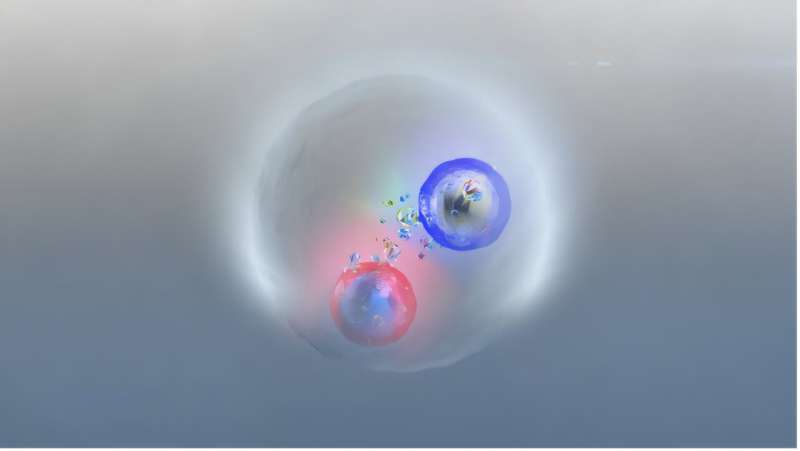An unexpected interaction between top quarks, the most massive of all known elementary particles, has been confirmed at CERN’s Large Hadron Collider (LHC). This discovery was presented at the European Physical Society’s High-Energy Physics conference in Marseille. Scientists from the ATLAS experiment have validated the earlier findings of their CMS counterparts, which suggested the formation of a “quasi-bound-state” known as toponium.
Groundbreaking Findings at the LHC
Top quarks typically emerge from high-energy proton-proton collisions at the LHC, where measuring the process’s probability, or cross section, is vital. This measurement tests the Standard Model of Particle Physics and explores potential new particles. In 2018, CMS researchers identified an unusual surplus of top quark-antiquark pairs—often a sign of new particles. This excess appeared at the minimum energy needed to create such pairs, leading scientists to consider the possibility of toponium.
Unlike other quarks, the top quark’s brief existence usually precludes forming bound states. However, quantum mechanics allows a fleeting union between a top quark and its antimatter counterpart if they are nearly at rest relative to each other. These pairs can exchange gluons, the strong nuclear force’s messengers, to form toponium. The CMS collaboration measured this production cross section at 8.8 picobarns with a certainty level passing the “five sigma” threshold, confirming its statistical significance.
ATLAS Collaboration Confirms Results
The ATLAS experiment further reinforced these findings, noting a production cross section of 9.0±1.3 picobarns and achieving a significance level of 7.7 sigma. This consistency between CMS and ATLAS data negates models that overlook the quasi-bound-state formation.
Despite these observations, researchers are still striving to determine the root cause. One alternative explanation could be the presence of a new particle with a mass approximately twice that of the top quark. Such a particle might emerge from gluon collisions and decay into a top quark-antiquark pair.
Implications for the Future of Particle Physics
The findings mark a significant advancement in understanding the strong nuclear force. As Joachim Mnich, CERN Director of Research and Computing, remarked, these results demonstrate the LHC’s capacity to uncover subtle phenomena that enhance comprehension of the universe’s fundamental forces. The LHC’s ongoing Run 3, promising even more data, will likely extend the exploration of top quark interactions.
If the toponium hypothesis holds true, it would introduce a new dimension to the study of quarkonia, the unstable states formed by heavy quark-antiquark pairs. Historical discoveries of similar states, such as charmonium and bottomonium, turned pivotal in particle physics, igniting significant scientific revolutions.
The work by both the CMS and ATLAS collaborations has been accepted for publication in Reports on Progress in Physics, marking an exciting chapter in the ongoing inquiry into the universe’s most fundamental workings.































































